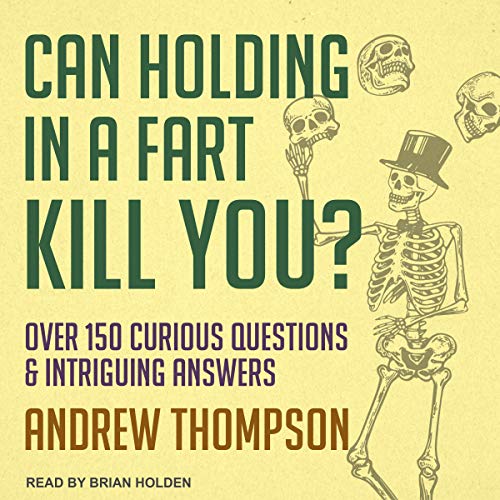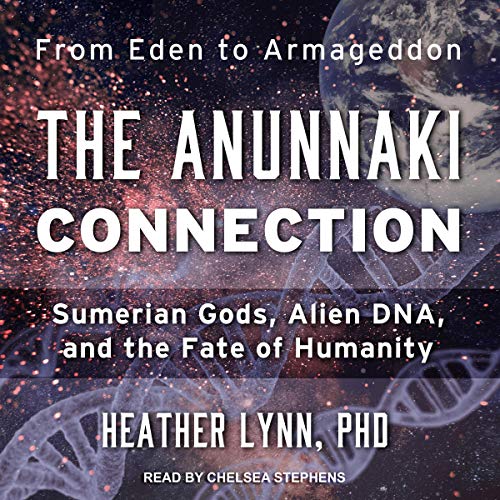I’m currently blasting through my audio book library and have no credits left. The urge to spend on more was tempting … but then I remembered Audible Plus has thousands of titles for free if you’re a member. So many good non-fiction gems on there … I don’t think there’s a limit to downloading titles (if there is, I certainly haven’t hit it yet).
My non-fiction (even if a couple of these titles might be stretching that term) listening is set for a while at least. Certainly an eclectic mix:

The story of poison is the story of power….
For centuries, royal families have feared the gut-roiling, vomit-inducing agony of a little something added to their food or wine by an enemy. To avoid poison, they depended on tasters, unicorn horns and antidotes tested on condemned prisoners.
Servants licked the royal family’s spoons, tried on their underpants and tested their chamber pots. Ironically, royals terrified of poison were unknowingly poisoning themselves daily with their cosmetics, medications and filthy living conditions.
Women wore makeup made with lead. Physicians prescribed mercury enemas, arsenic skin cream, drinks of lead filings and potions of human fat and skull, fresh from the executioner.
The Royal Art of Poison is a hugely entertaining work of popular history that traces the use of poison as a political – and cosmetic – tool in the royal courts of Western Europe from the Middle Ages to the Kremlin today.

Today, astonishing surgical breakthroughs are making limb transplants, face transplants, and a host of other previously undreamed-of operations possible. But getting here has not been a simple story of medical progress. In Blood and Guts, veteran science writer Richard Hollingham weaves a compelling narrative from the key moments in surgical history. We have a ringside seat in the operating theater of University College Hospital in London as world-renowned Victorian surgeon Robert Liston performs a remarkable amputation in 30 seconds – from first cut to final stitch. Innovations such as Joseph Lister’s antiseptic technique, the first open-heart surgery, and Walter Freeman’s lobotomy operations, among other breakthroughs, are brought to life in vivid detail. This is popular science writing at its best.

More than 200 fun facts – from baffling and bizarre to entertaining and enlightening
This curious, captivating collection of trivia will surprise and intrigue listeners with amazing answers to questions like:
- Is Jurassic Park possible?
- What causes “the shakes” after drinking a lot of alcohol?
- Why do dogs walk in circles before lying down?
- What makes popcorn pop?
The follow-up to the best-selling What Did We Use Before Toilet Paper?, Can Holding in a Fart Kill You? has even more fun and fascinating trivia. Perfect for the ever-curious trivia lover, this book is the ultimate in truly extraordinary information. From silly to serious to outright bizarre, this expansive collection offers surprising answers and unexpected facts on everything from history and science to pop culture and nature. From the everyday to the fantastical – it’s all here.

With an introduction read by Max Hastings. The famous D-Day landings of 6 June, 1944, marked the beginning of Operation Overlord, the battle for the liberation of Europe.
Republished as part of the Pan Military Classics series, Max Hastings’ acclaimed account overturns many traditional legends in this memorable study. Drawing together the eyewitness accounts of survivors from both sides, plus a wealth of previously untapped sources and documents, Overlord provides a brilliant, controversial perspective on the devastating battle for Normandy. Max Hastings, author of over 20 books, was born in 1945. He was a scholar at Charterhouse and University College, Oxford, before working as foreign correspondent for newspapers and BBC television, reporting from over 50 countries. He was editor of the Daily Telegraph for almost a decade, and then for six years edited the Evening Standard. He has won many awards for his journalism, particularly for his dispatches from the South Atlantic in 1982. He was knighted in 2002.

The definitive history of the Vikings – from arts and culture to politics and cosmology – by a distinguished archaeologist with decades of expertise
The Viking Age – from 750 to 1050 saw an unprecedented expansion of the Scandinavian peoples into the wider world. As traders and raiders, explorers and colonists, they ranged from eastern North America to the Asian steppe. But for centuries, the Vikings have been seen through the eyes of others, distorted to suit the tastes of medieval clerics and Elizabethan playwrights, Victorian imperialists, Nazis, and more. None of these appropriations capture the real Vikings, or the richness and sophistication of their culture.
Based on the latest archaeological and textual evidence, Children of Ash and Elm tells the story of the Vikings on their own terms: their politics, their cosmology and religion, their material world. Known today for a stereotype of maritime violence, the Vikings exported new ideas, technologies, beliefs, and practices to the lands they discovered and the peoples they encountered, and in the process were themselves changed. From Eirík Bloodaxe, who fought his way to a kingdom, to Gudrid Thorbjarnardóttir, the most traveled woman in the world, Children of Ash and Elm is the definitive history of the Vikings and their time.

For those looking for the real story behind the fictionalized movie account of the 47 Ronin story, this is the definitive, fascinating account of this unforgettable tale of a band of samurai who defied the Emperor to avenge the disgrace and death of their master, and faced certain death as a result. It led to one of the bloodiest episodes in Japanese history, and in the process, created a new set of heroes in Japan.
In 1701, young Lord Asano is goaded into attacking a corrupt official at the Japanese Court. Although the wound Asano inflicts is minimal, the Emperor’s punishment is harsh: Lord Asano is ordered to commit seppuku, or ritual suicide. His lands are confiscated and his family is dishonored and exiled. His samurai retainers now become ronin, or masterless, and are dispersed.
These ronin are not trusted by their enemies and live under the watchful eyes of spies for months. They appear to adapt to their new circumstances by becoming tradesmen and teachers. But the ronin only seem to accept their fate. They are in fact making careful plans for revenge, biding their time until the moment to strike is right! Their deeds became Japan’s most celebrated example of bravery, cunning, and loyalty in an age when samurai were heroes, and honor was worth dying for.
John Allyn’s masterful retelling of 47 Ronin has long been considered the definitive version of these dramatic historical events.

Ripples in Spacetime is an engaging account of the international effort to complete Einstein’s project, capture his elusive ripples, and launch an era of gravitational-wave astronomy that promises to explain, more vividly than ever before, our universe’s structure and origin.
The quest for gravitational waves involved years of risky research and many personal and professional struggles that threatened to derail one of the world’s largest scientific endeavors. Govert Schilling takes listeners to sites where these stories unfolded – including Japan’s KAGRA detector, Chile’s Atacama Cosmology Telescope, the South Pole’s BICEP detectors, and the United States’ LIGO labs. He explains the seeming impossibility of developing technologies sensitive enough to detect waves from two colliding black holes in the very distant universe, and describes the astounding precision of the LIGO detectors. Along the way, Schilling clarifies concepts such as general relativity, neutron stars, and the big bang using language that listeners with little scientific background can grasp.

Neil deGrasse Tyson has a talent for guiding readers through the mysteries of outer space with stunning clarity and almost childlike enthusiasm. Here, Tyson compiles his favorite essays that he wrote for Natural History magazine across a myriad of cosmic topics, from astral life at the frontiers of astrobiology to the movie industry’s feeble efforts to get its night skies right.
Tyson introduces us to the physics of black holes by explaining the gory details of what would happen to our bodies if we fell into one, examining the needless friction between science and religion in the context of historical conflicts, and noting Earth’s progression to “an insignificantly small speck in the cosmos.”
Renowned for his ability to blend content, accessibility, and humor, Tyson is a natural teacher who simplifies some of the most complex concepts in astrophysics while sharing his infectious excitement for our universe.

A worldwide history of alien contact from one of the most respected authorities on the phenomenon: “A bible for UFO watchers” (The Wall Street Journal).
This fascinating new volume tells the story of contact between aliens and humans from all across the globe, dating back to 1932, including meetings with military personnel and American presidents such as Eisenhower and Kennedy.
For the first time, a former member of MI6 reveals her conversation with Neil Armstrong at a NASA conference, when she confirmed that there were “other” spacecraft on the moon when Apollo 11 landed in 1969. Armstrong also confirmed that the CIA was behind the cover-up.
In a further admission in December 2012, Russian Prime Minister Dmitry Medvedev revealed “the president of Russia is given a special top secret folder [that] in its entirety contains information about aliens who have visited our planet. Along with this, the president is given a report of the Special Service that exercises control over aliens in our country. I will not tell you how many of them are among us because it may cause panic.”

Over 6,000 years ago, the world’s first civilization, the Sumerians, were recording stories of strange celestial gods who they believed came from the heavens to create mankind. These gods, known as the Anunnaki, are often neglected by mainstream historians. The Sumerians themselves are so puzzling; scholars have described their origin as “The Sumerian Problem.”
With so little taught about the ancient Sumerians in our history books, alternative theories have emerged. This has led many to wonder, What is the true story behind the Sumerians and their otherworldly gods, the Anunnaki?
In The Anunnaki Connection, Heather Lynn connects a diverse range of new and existing theories about the Anunnaki, offering a definitive guide to Mesopotamian gods while exploring what role they might have played in engineering mankind. The Anunnaki Connection traces the evolution of gods throughout the Ancient Near East, analyzing the religion, myth, art, and symbolism of the Sumerians, investigating: Who are the Anunnaki?
How accurate are the current Sumerian text translations, and how do we know for sure who to believe? Is there a connection between the Anunnaki and other ancient gods? What about demons? Where are the Anunnaki now, and will their possible return spell the end of our world?
Are you really going to listen to that “Aliens are among us” one?
LikeLiked by 1 person
I am, but purely because in the little horror novella series I am writing, I want to do something with aliens. So it’s easy research.
LikeLiked by 1 person
Just need to know if holding my farts can kill me, so let me know when you know LOL 😉
LikeLiked by 1 person
The second I find out, you’ll be the first to know. So you may get a random comment in one of your posts saying so😅
LikeLike
OMG, these look so compelling! I want to listen to them NOW! 😀 Well, maybe not the aliens one… 😅
LikeLiked by 1 person
I’ve already gotten through one. Bloody love a bit of non-fiction
LikeLiked by 1 person
I don’t typically read nonfiction, but The Royal Art of Poison definitely sounds cool!
LikeLiked by 1 person
I’ve listened to another book on poisoning before. They’re always so interesting
LikeLiked by 1 person
Some of these really stretch your “non-fiction” binge…
LikeLiked by 1 person
I’m sure some of them are entirely factual to certain people 😂
LikeLiked by 1 person
“This fascinating new volume tells the story of contact between aliens and humans from all across the globe, dating back to 1932,“
Only 1932? UFO sighting have gone further back then that. They don’t get talk about that often.
LikeLiked by 1 person
I’m not sure if the “shocking truth” of Earth being visited by aliens that talk to American presidents counts as non-fiction. But you never know. I remember scratching my head as to how I was going to classify Chariots of the Gods when I reviewed it for my SF blog. Maybe if a book is sincere in its belief that it’s true then that’s all that counts.
LikeLiked by 1 person
Hence my little disclaimer that some might be stretching the boundaries as far as the non-fiction tag went 😅 Audible had it under that category, so I ran with that
I’d probably class anything written by a regular member of the Ancient Aliens tv team as ‘Speculative Non-Fiction’
LikeLike